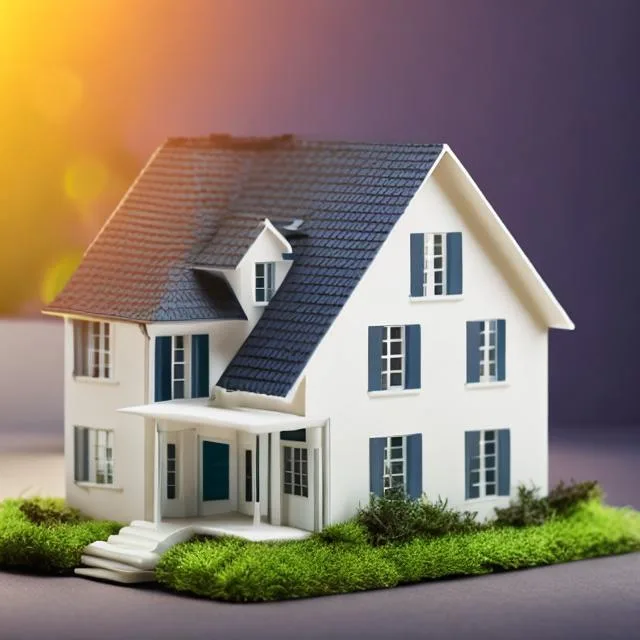Home » Home improvement » What Direction Should A House Face For Energy Efficiency?
When it comes to designing and building an energy-efficient home, every detail matters. One of the often-overlooked aspects that can significantly affect a home's energy efficiency is its orientation or the direction it faces. The way your house is positioned in relation to the sun, wind, and other environmental factors can have a profound impact on your energy consumption, comfort, and overall sustainability. In this article, we'll explore why house facing is crucial for energy efficiency and how you can make informed decisions when planning your home's orientation.

House orientation refers to the direction your home faces in relation to the cardinal points: north, south, east, and west. Each orientation has its advantages and disadvantages, and the choice largely depends on your location and climate. Let's delve into how different orientations can impact energy efficiency:
South-facing homes are designed to maximize exposure to the sun, particularly in the northern hemisphere. This orientation allows you to take full advantage of passive solar heating during the winter months. Large south-facing windows and well-placed thermal mass elements can capture and store heat from the sun, reducing the need for artificial heating. However, it's essential to incorporate shading devices to prevent overheating in the summer.
North-facing homes receive minimal direct sunlight, making them ideal for regions with hot climates. While they may not benefit from passive solar heating, they maintain more consistent temperatures throughout the year. North-facing windows provide ample natural light without the risk of excessive heat gain, reducing the reliance on artificial lighting and cooling systems.
East-facing homes capture the gentle morning sunlight, creating a welcoming ambiance. This orientation is particularly advantageous for bedrooms and kitchen areas, where you can enjoy the sunrise. However, it's essential to manage heat gain in the afternoon, possibly with the use of shading devices or energy-efficient windows.
West-facing homes enjoy the warm glow of the setting sun, making them suitable for entertaining spaces like living rooms and outdoor patios. However, they are prone to afternoon heat gain, which can lead to increased cooling costs. Proper insulation and shading solutions are vital for west-facing homes to maintain comfort.
Climate: Your local climate plays a significant role in determining the optimal orientation for your home. Consult with a local architect or builder who understands the region's climate patterns.
Site Conditions: The specific features of your building site, such as neighboring buildings, trees, and terrain, can influence the ideal orientation. Consider conducting a site analysis to identify potential obstructions.
Energy Goals: Define your energy efficiency goals. Are you aiming for net-zero energy consumption, or do you want to reduce your carbon footprint? Your orientation choice should align with your objectives.
Passive Solar Design: If you opt for a south-facing orientation, embrace passive solar design principles. This includes selecting energy-efficient windows, incorporating thermal mass, and integrating shading solutions.
Landscaping: Thoughtful landscaping can enhance your home's energy efficiency. Deciduous trees strategically placed on the west side can provide shade in the summer while allowing sunlight to penetrate during the winter.
Energy-Efficient Windows: Invest in high-quality, energy-efficient windows with low U-values and solar heat gain coefficients (SHGC) that suit your orientation.
Proper Insulation: Ensure your home is well-insulated to minimize heat loss in the winter and heat gain in the summer.
Ventilation: Implement natural ventilation strategies to reduce the need for mechanical cooling.
Solar Panels: Consider installing solar panels to harness renewable energy and further reduce your environmental impact.
Home Automation: Embrace smart home technologies to monitor and control energy usage, optimizing your home's efficiency.
The direction in which your house faces is a critical factor in achieving energy efficiency and sustainability. Whether you're building a new home or retrofitting an existing one, carefully consider your home's orientation in relation to the sun's path, local climate, and your energy goals. By making informed decisions about house facing and implementing energy-efficient design principles, you can create a comfortable, eco-friendly home that minimizes energy consumption and reduces utility costs. Ultimately, the right orientation can lead to a more sustainable and environmentally responsible way of living while enhancing your overall quality of life.
Disclaimer: This article contains sponsored ads and affiliate links. Research and make informed decisions before engaging with advertised products/services.
©2023. Homereviewsclub. All Rights Reserved.